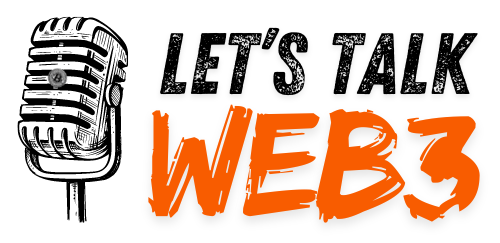The convergence of artificial intelligence (AI) and blockchain technology has the potential to reshape industries and redefine how we interact with digital systems. While AI promises automation, efficiency, and personalized experiences, it faces challenges related to trust, transparency, and data integrity.
Blockchain, with its inherent security and immutability, offers a powerful solution. Covalent is at the forefront of this revolution, providing the data infrastructure and tools needed to build a future of trusted, decentralized AI.
The Key Trends Pushing AI and Blockchain Toward Convergence
Several key trends are driving the convergence of AI and blockchain. First, there’s a growing demand for trust and transparency in AI systems. Users want to know how AI algorithms are making decisions, and they need assurance that the data used to train these models is accurate and unbiased.
Second, the rise of decentralized AI is creating new opportunities for innovation and collaboration. Blockchain enables the secure sharing of data and algorithms, fostering a more democratic and inclusive AI ecosystem. Third, the increasing availability of on-chain data is providing a rich source of information for AI models.
“AI-driven systems rely on complete and accurate data, but most blockchains are siloed. Covalent solves this by offering unified access to 100+ chains, enabling AI agents to move assets cross-chain and make informed decisions without fragmentation issues,” said Ganesh Swami, CEO and Co-Founder of Covalent.
The Structural Data Problem in Web3 AI
Despite the immense potential, integrating AI and blockchain presents significant challenges. Data fragmentation and limited interoperability between blockchains hinder the development of truly integrated AI systems. Scalability, security, and the need for verifiable data are also critical considerations. However, these challenges also represent significant opportunities for innovation.
AI thrives on structured, high-integrity datasets. In industries like finance and healthcare, data is meticulously organized to ensure AI models operate efficiently. Web3, by contrast, is a fragmented landscape. On-chain data is plentiful but unstructured, and its reliability is often questionable. This lack of clean, composable data layers has severely stunted AI’s impact on blockchain applications.
Bridging AI and Blockchain—Covalent and GoldRush’s Role in This Evolution
Covalent has recognized this gap and built blockchain data APIs called GoldRush to address it. By structuring blockchain data, Covalent enables AI agents to reason, automate, and optimize workflows dynamically—without the inefficiencies of fragmented data sources. With real-time, verifiable data across 100+ blockchains, AI agents can now perform complex, autonomous decision-making tasks, from cross-chain operations to regulatory compliance.
For businesses, this means AI agents can now automate interactions between decentralized smart contract-based protocols, which themselves serve as financial automation systems. Rather than verifying on-chain data—since blockchain is already verifiable by design—these agents leverage structured, cryptographically proven data from sources like the Ethereum Wayback Machine to execute informed decisions across protocols.
This allows for cross-chain asset movements, automated treasury management, governance execution, and seamless coordination between decentralized finance (DeFi) applications, reducing friction and optimizing workflows without direct human intervention.
This impact is not just theoretical. Companies such as Rainbow, CoinLedger, and EY are already leveraging GoldRush’s structured blockchain data to enhance compliance, security, and AI-driven financial automation. Other entities, like Entendre Finance and Awaken Tax, are also reaping the benefits of GoldRush.
“We leverage GoldRush’s structured on-chain data and AI to automate blockchain accounting and provide real-time financial reports for Web3 enterprises,” Omar Khattab, Founding Engineer at Entendre Finance, said.
Andrew Duca, Co-founder at Awaken Tax, also expressed his satisfaction with the integration of GoldRush.
“There’s no way we could have built our tax product without GoldRush for easy access to broad and rich multichain data,” Duca added.
The Future: Zero Employee Enterprises (ZEEs) and AI-Powered Web3 Operations
The expansion of GoldRush’s AI-ready datasets is laying the groundwork for fully autonomous, AI-driven business models, a concept known as Zero-Employee Enterprises (ZEEs).
ZEEs represent a paradigm shift, where AI agents autonomously execute business functions with minimal human intervention. This goes beyond simple automation. It encompasses AI-driven financial management, real-time treasury oversight, and decentralized autonomous organization (DAO) governance—all functioning efficiently without the delays that often come with human processing.
“Enterprises restricted to Google-approved products can now build AI agents that use on-chain data because of the availibility of Covalent and by extension GoldRush APIs offered on the Google marketplace that are built into AI related Covalent product offerings, meaning developing systems of agent swarms—or Zero Employee Enterprises (ZEEs)—to improve efficiency across core business operations is now possible,” Ganesh noted.
The launch of AI Agent Software Development Kit (SDK) 0.2.0 also marks a significant milestone. This tool gives AI agents the ability to interact with blockchain data in a seamless, programmatic way. The SDK is built for:
DeFi Position Management: AI agents can autonomously manage liquidity positions and optimize yield farming strategies.
DAO Governance Automation: AI can execute proposals, manage treasury operations, and coordinate incentives.
Cross-Chain Operations: AI agents can seamlessly bridge assets, perform swaps, and manage multi-chain portfolios.
Enterprise AI Workflows: Automating multi-step business processes with structured, AI-optimized on-chain data.
Why The Crypto Industry Needs to Rethink Its AI Strategy
While AI is advancing at a breakneck pace, crypto is still struggling to keep up. Even with the anticipated integration of blockchain technology, crypto remains several steps behind in AI adoption. “A lot of what’s happening in crypto AI today was already done in traditional AI spaces two years ago,” said Ganesh.
According to Ganesh Swami, the problem isn’t just technical—it’s cyclical. “The current AI cycle was kicked off in 2023 by OpenAI with ChatGPT as a consumer-facing product, whereas crypto was in a bear market and only just started to take notice of non-consumer-facing projects and decentralized AI infrastructure like BitTensor,” he explained.
The industry is now facing a timing risk. Will Web3’s AI evolution catch up before demand forces a rapid (and reactive) transformation? For blockchain-based AI to achieve mainstream adoption, the problems it solves must become urgent enough to demand change.
“Take deep fakes, for example—no one’s going to push for blockchain verification at scale until the crisis is undeniable. That creates a timing risk: will it become a priority in two years? Five? Hard to predict,” Ganesh noted.
The next phase of AI-driven blockchain innovation will be defined by how quickly businesses recognize and act on the need for structured, verifiable data. AI agents cannot function effectively without accurate, organized blockchain insights.
For Web3 to truly embrace AI, it must move beyond fragmented, unreliable datasets toward a composable, structured data economy. The question isn’t whether AI will transform Web3—it already has. The real question is: Will Web3 provide AI with the data it needs to succeed? The industry’s future depends on the answer.
Disclaimer
In compliance with the Trust Project guidelines, this opinion article presents the author’s perspective and may not necessarily reflect the views of BeInCrypto. BeInCrypto remains committed to transparent reporting and upholding the highest standards of journalism. Readers are advised to verify information independently and consult with a professional before making decisions based on this content. Please note that our Terms and Conditions, Privacy Policy, and Disclaimers have been updated.

